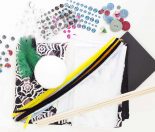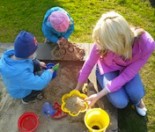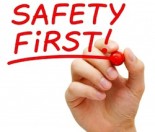Puzzles and logic toys help your child to develop a range of skills, and there are puzzles and logic toys to suit every age and stage of development. Gone are the days where the only puzzles were jigsaws in a box, now there are games, puzzles, activities and logic toys in all shapes and sizes.
What are Puzzles and Logic Toys?
Puzzles and logic toys are activities which require matching, sorting and problem solving to complete a challenge or task. Jigsaw puzzles are the most common version of puzzles, but there are lots of other versions available as well – particularly as children get older. Cubes, pyramids and other 3 dimensional puzzles are popular with older kids, as are IQ type puzzles with ropes, rings and balls.
Educational toy stores in NZ offer a great selection of puzzles and logic toys, and cater for every age and stage of development.
What skills will my child develop through Puzzles and Logic Toys?
As soon as your child opens their eyes, the whole world is a puzzle, and there are a million things they need to decipher and solve as they grow up. Different puzzles and logic toys will help your child develop different skills, but there are some overarching benefits that are common throughout.
Intellectual Benefits
Puzzles and logic toys help to stimulate the thinking side of your child’s brain, and force them to focus on problem solving skills such as process and logic. They begin to understand that there are several ways to attack a problem, and will experiment with ways which work best for them. The more puzzles and logic toys your child explores, the stronger their personal sense of process will be.
The problem solving skills learnt through puzzles can be transferred to every area of your child’s life.
Physical Benefits
At a young age, puzzles help children to develop fine motor skills, which in everyday terms means the ability to make small (or fine) movements. The picking up, grasping or pincing of pieces helps to develop fine muscle control, which in turn helps your child when it comes to writing-ready time.
Emotional and Social Benefits
Puzzles offer a number of emotional and social benefits including:
- A sense of achievement when the puzzle is complete
- The development of determination and perseverance
- Co-operation when completing a puzzle with others
- The chance to solve problems independently and know when you have reached a right result
Things to Consider when buying Puzzles and Logic Toys
As with anything, there are several things to consider when buying puzzles and logic toys. Obviously safety is an important aspect, as is making sure the toy is appropriate for the age and stage of your child. Staff at educational toy stores should be able to help you out in these areas, but here are some basic guidelines to set you in the right direction.
Puzzles for Babies and Toddlers
Don’t panic, I’m not suggesting your baby should be able to complete a jigsaw puzzle all on their own, but there lots of other types of puzzles which are great for this age group. Obviously you’ll need to make sure there are no small pieces to the puzzle which could cause choking, and also check for rough or sharp edges.
Some great puzzles for babies and toddlers are:
- Posting Box. These are the games which have different shaped toys, to fit into different shaped holes. They come as boxes, tubes and even balls, but the challenge remains the same – your child needs to work out which shape fits where. Posting boxes are great for babies because the pieces are easy to pick up and hold onto. They range in price from $12 – $40.
- Single Piece Puzzles. A single piece puzzle are puzzles where specific shapes are cut out of a wooden backing, and each piece has a peg or handle so that it can be lifted out, and replaced. Usually there is no overall picture to the puzzle, but instead the single pieces are basic items like pieces of fruit, animals, toys, or letters of your child’s name.The pegs or handles on single piece puzzles help your child to develop fine motor skills, and they are a great introduction to more classic jigsaw versions. Single piece puzzles start from $15.
- Big Piece Wooden Puzzles. Once your child has mastered the single piece puzzle, they’ll enjoy being able to put together a jigsaw. Moving on to this stage will help them develop new thinking processes, and they will need to start questioning how they will attack the problem. Wooden puzzles which have the picture painted on the backboard, will give your child another point of reference in solving the problem, so these are good puzzles to start with. Make sure the puzzle pieces are big, and that there are no more than 5 – 6 pieces to the puzzle. You can buy big piece wooden puzzles from $15.
Puzzles for 4 – 7 year olds
At this preschool and primary school age and stage, most children will be developing a clear sense of how they work out problems, and you’ll need to introduce some new challenges for them to further develop those skills. In addition to the large piece wooden puzzles, kids at this age will enjoy working with large size floor puzzles, and traditional cardboard jigsaws with big pieces. To begin with, introduce jigsaws where the backboard is stamped with the shape of the puzzle pieces, as this will give your child an extra point of reference in solving the puzzle.
Large piece jigsaws and floor puzzles start from $15.
Puzzles for 8 – 12 year olds
By about 8 years old your child will have developed the skills and concentration levels to attack some fairly difficult puzzles, and some children will have developed a real love of logic toys.
In addition to traditional jigsaws, some great puzzles for 8 – 12 year olds are:
- Multi Level Puzzles. As the name suggests, multi level puzzles are puzzles which have multi levels, and the backboard is cut so that only one level can be completed at a time. The most common multi level puzzles for children focus on things like the human body, the earth, or the layers of a house, but you can buy incredibly complex versions which uncover layers of all sorts of things. Multi level puzzles range from $25 – $70.
- 3D Puzzles. 3D puzzles are puzzles which have 3 dimensions to fit together – height, width and depth. Basic 3D puzzles involve building a cube or a pyramid, and more complex puzzles move on to all sorts of shapes. You can buy miniature foam or cardboard 3D puzzles for less than $10, or you can spend up to $50 for larger wooden or acrylic versions.
- Logic Toys. Like puzzles, logic toys are games where children need to solve a problem or complete a challenge, but they don’t necessarily mean putting pieces together. It may be twisting a cube to get the same colours on every side, untangling a rope without removing any rings, or sliding puzzle pieces to rearrange a sequence. There are literally hundreds of logic toys available, and they can become quite addictive (even for adults). Logic toys start from about $15 and go right into the hundreds.
When it comes to choosing puzzles, let your child be the guide. You want the puzzle to be achievable, but at the same time it must provide an element of challenge so those problem solving skills can develop. The best way to encourage a love of puzzles in your child is to develop a love of puzzles yourself. Why not buy yourself a jigsaw puzzle to have on the dining room table, and everyone in the family can help put it together. You might be surprised by how much you enjoy it, and just how clever you are!





